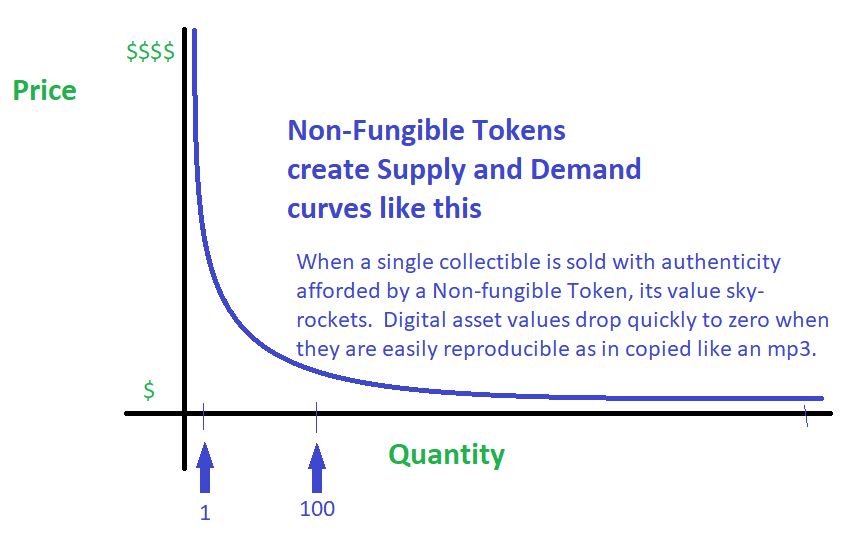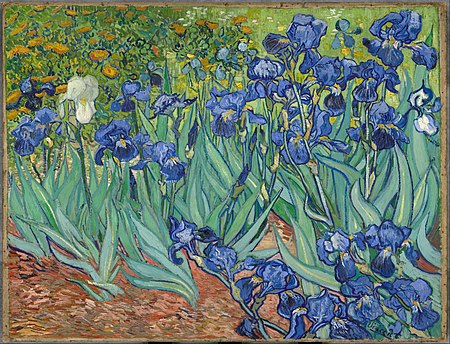The popular musician Grimes sold some animations she made with her brother Mac on a website called ‘Nifty Gateway’. Some were one-offs, while others were authentic limited editions, all were bought in about 20 minutes with total revenue of over $6 million. Despite the steep price tags, anybody can watch or copy typical GIF animations. However, this is no normal animation. It comes with a scarcity like no other. Classic supply and demand has been turned on its head with these new Digital certificates, also know as NFT’s or Non-fungible tokens. These animations, by Grimes are so valuable because they are authentic one-of-a-kind collectibles. They will maintain their value and be sold as collector’s items to somebody else in the future. It could be viewed as a sentimental investment.
NFTs are digital certificates that authenticate a claim of ownership to an asset, and allow it to be transferred or sold. The certificates are secured with blockchain technology similar to what constructs Bitcoin and other cryptocurrencies. A blockchain is a decentralized alternative to a central database. Blockchains store an irrefutable encrypted transaction ledger which is replicated across a network of online machines that prevent tampering or disputing ownership. This makes them useful for vital record keeping.

The key difference between NFTs and cryptocurrencies is that cryptos allow ‘fungible trade’, which signifies all Bitcoins can be exchanged for equal value with one another. NFTs are by definition ‘non-fungible’ and are used to restrict and prove individual ownership to digital asset.
You may be wondering, why do these buyers pay significant amounts of money for something people can just copy and use themselves? It may seem difficult to explain why authenticity and ownership to such high values in the digital world. Technology makes it easy to reproduce to infinity the most outstanding and beautiful works of art ever produced. To put this in perspective, CyberHoot can reproduce for you as an illustration of Van Gogh’s Irises painting to the right. What’s the value of that image on your screen right now? Not even a penny. What’s the value of the original hanging on the wall of an art gallery? ($53.9 Million in 1987 – the last time it sold). Christie’s sold a a Beebles art collage of all his work in 2021 in a single image for $69 million using NFT to authenticate and assign ownership.

The life of digital content has depended on its ability to spread. NFTs, however, bring code and culture together to create a form of control that eliminates the infinite copying of digital assets. They create a unique kind of “authenticity” in an otherwise shareable world.
NFTs are tradable tokens that can be thought of as bragging rights. They do not transfer copyright ownership of the digital piece you are purchasing. Like anything, with money comes scams. You need to be very careful of purchasing an NFT to verify the origin of the NFT. The technology is new, and it might be difficult to validate the digital signature is valid. If you asked CyberHoot to valid the authenticity of a Picasso painting in the physical world, we’d have to call an Art expert of the highest order. The same might be true of NFTs.
NFTs are also highly speculative. You do not own the copyright of the NFT. Even the artwork sold at Christie’s for $68M did not transfer copyright ownership rights from the artist Beeples to the NFT token holder. The only value an NFT holds is in the eyes of the person you’re selling it to and what they are willing to spend for it.
With speculation comes volatility. Many cryptocurrencies are created each month and some experience a brief meteroic rise as the next bitcoin replacement digital currency only to come plummeting back down to earth worthless and spent (and much faster than they went up). With that volatility, you could lose a good deal of your investment overnight, so be careful and wary.
Source:
Additional Reading:
NFTs Are Everywhere: What to Know Right Now About the Digital Trend and Where It’s Headed Next
Early CryptoPunk Digital Collectible Sells for $762K in Ether
Additional Viewing:
All You Need to Know About NFTs – CNET 8 Min Video
Discover and share the latest cybersecurity trends, tips and best practices – alongside new threats to watch out for.

As smart homes get smarter, so do their habits of watching, sensing, and reporting. Enter WiFi Motion Detection, a...
Read more
Spoiler alert: If you’re still using “password123” or “iloveyou” for your login… it’s time for an...
Read moreGet sharper eyes on human risks, with the positive approach that beats traditional phish testing.
